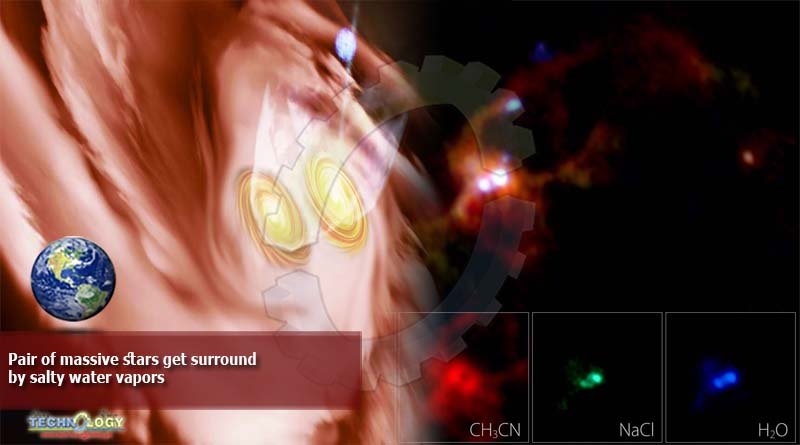Researchers have just discovered a pair of massive stars surrounded by water vapor and table salt, according to a study published in The Astrophysical Journal Letters. The two baby stars have a combined mass 25 times that of our Sun, and are surrounded by a huge gas reservoir that weighs 10,000 Suns as well as molecules such as methyl cyanide, sodium chloride, and hot water vapor.

“Sodium chloride is familiar to us as table salt, but it is not a common molecule in the Universe,” lead author Kei Tanaka, from the National Astronomical Observatory of Japan, said in a statement. “This was only the second detection of sodium chloride around massive young stars. The first example was around Orion KL Source I, but that is such a peculiar source that we were not sure whether salt is suitable to see gas disks around massive stars. Our results confirmed that salt is actually a good marker. Since baby stars gain mass through disks, it is important to study the motion and characteristics of disks to understand how the baby stars grow.”
The detections were possible thanks to the Atacama Large Millimeter/submillimeter Array (ALMA). Massive stars often form in pairs but researchers believe these two were forced together rather than born together. The evidence for this scenario is seen in the disk of material that surrounds the stars, which rotates in a different direction from the pair.
“We found a tentative sign that the disks are rotating in opposite directions,” co-author Yichen Zhang, a researcher at RIKEN. “The counter-rotation of the disks may indicate that these two stars are not actual twins, but a pair of strangers which were formed in separated clouds and paired up later.”
The system is known as IRAS 16547-4247 and is located 9,500 light-years from Earth in the constellation Scorpius.
Originally published by IFLScience
